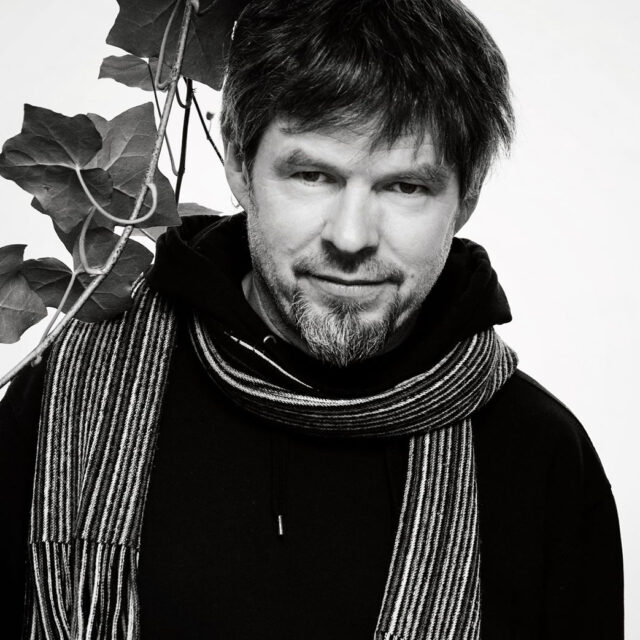Composer, multi-instrumentalist, tabla player, pedagogue, musicologist
In his music, he likes to cross genre barriers, taking inspiration from old European and non-European musical traditions, in which the music often has an ecstatic, trance-like dimension. At the same time, he uses modern musical technologies and processes. He is practically the only one in the Czech Republic, who has long been deeply involved in Indian rhythm and tabla playing, which he studied under the guidance of one of the most important contemporary tabla masters, Sanju Sahai.
Tomas studied composition at HAMU in Prague under Professor Hanus Barton. His dissertation dealt with the issue of micro-intervals in Indian classical music. He attended various courses, workshops and private lessons in India, UK, Italy and Turkey. He plays many ethnic percussion instruments (darbuka, riq, frame drums, cajon, etc.), didjeridu, medieval dulcimer, clarinet, end-bell, blues harmonica, etc. He uses techniques of aliquot singing, beat-boxing, and Indian rhythm recitation.
Tomáš Reindl creates music without the limitations of genres; he often moves at the borders of different genres (classical music, jazz, songwriting, world music, film and stage music).
Work: YOGA: An original melodrama for guru, practitioners and orchestra (2017), UTERO: Concerto for Cello, Tabla and Symphonic Orchestra (2015), and music for the ballet The Garden of Statues at the Opera and Ballet Theatre in Ústí n.L. (2010).
He currently teaches Ethnomusicology and other subjects at the Faculty of Music of the Academy of Musical Arts in Prague, and frequently teaches various music workshops and seminars.
ISFP 2025 ABSTRACT:
Psychological aspects of microintervals of Indian music
This paper presents the results of research on the psychological aspects of exactly calculated just intonation intervals, which was performed in the form of a listening test. These micro-interval nuances (śruti) are attributed to specific emotions or feelings in ancient Indian music-theoretical texts, just as in the European tradition, various extra-musical qualities have been attributed to different intervals or modes since Antiquity. The purpose of the research was therefore to try to map the psychological aspects of the selected intervals and to verify whether the respondents agreed on them. In contrast to similar research testing tempered intervals, here we are dealing with precisely tuned concords of characteristic intervals of just intonation systems (5-limit and 7-limit just intonation), realized in the form of sustained drones. The results of this research show that listening to isolated sustained concords can induce a wide range of responses in the listener, which are identical or similar for a significant number of respondents. Moreover, in some cases, the reactions to a given interval/emotion combination coincide or resemble the characteristics given by Indian or European traditions. All the results of the research have been summarized in a table which can serve practical purposes.
